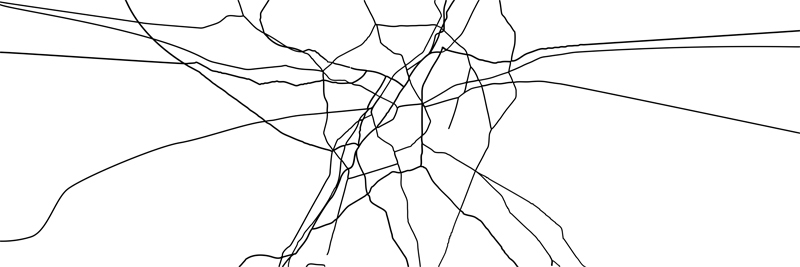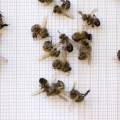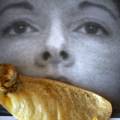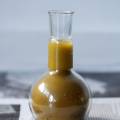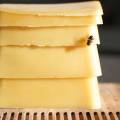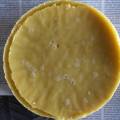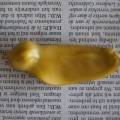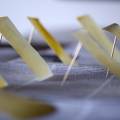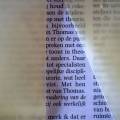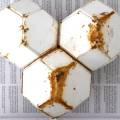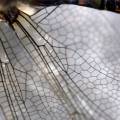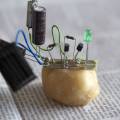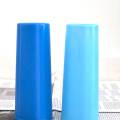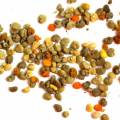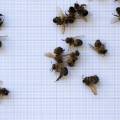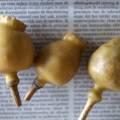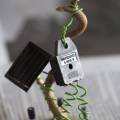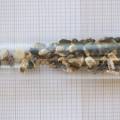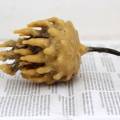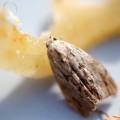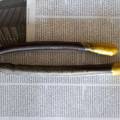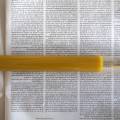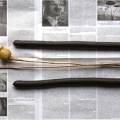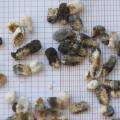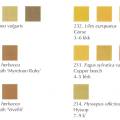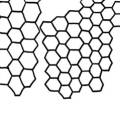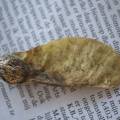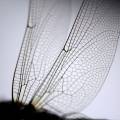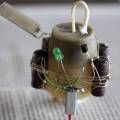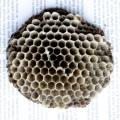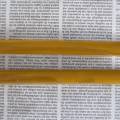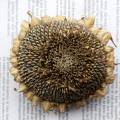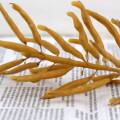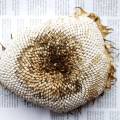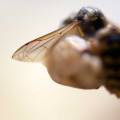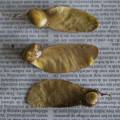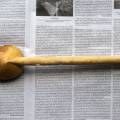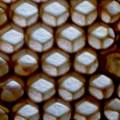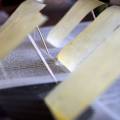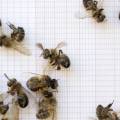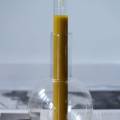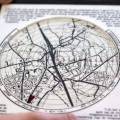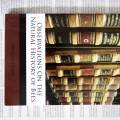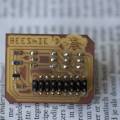Table of Contents
TRANSPARENT BEEHIVE
concept and background
abstract:
My work is situated on the interstices between art, science, and community. As part of the Open Greens project, I got intensely involved in city bees. As beekeeper I studied the botanical conditions in which bees thrive. Bees exhibit very original solutions to the challenges that social insects face, e.g. on the level of communication and collective decision making. They are an endless source of visually stunning images and sounds and their remarkable collective behavior provides inspiration and metaphors for the functioning of human society.
The Transparent (or see-through) beehive is an observatory, a living laboratory to study how a bee colony evolves. The hive has been installed on a Brussels rooftop connected to an urban garden laboratory. I made an original design and used different ways to monitor the hive: through camera and audio recordings, measurements of humidity, temperature, CO2, etc. I also introduced the means to study interaction with the local environment: examination of pollen, analysis of honey, tracking of flight routes.
The installation is a re-enactment of the research process, done in Brussels from 2011 to 2012. The life in the hive and the interaction with the ecosystem will be reconstructed for the time slice April 2012 - June 2013, with data, sound and images. Additional materials include everyday objects from working with the bees and from the project's archive.
stukje abstract in Nederlands:
Sinds 2010 werk ik als individuele kunstenaar met bijenkolonies. Mijn interesse gaat vooral uit naar werken met bijen in de stad, en ik gebruik de resultaten om discussies aan te gaan rond biodiversiteit en duurzaam leven en om het publiek op een interessante wijze te confronteren met andere manieren van omgaan met de stad.
Binnen deze ecologische onderzoekslijn organiseer ik voor Okno vzw publieke momenten onder de noemer OpenGreens. Op regelmatige basis breng ik kunstenaars, ingenieurs, designers, imkers en wetenschappers bij mekaar voor het uitwisselen van kennis. Tot nog toe werden er met beperkte middelen en veel creativiteit enkele interessante monitoring setups opgezet, die de basis boden voor ecologisch geïnspireerde kunst waarin organische, digitale, electronische, mensenlijke en dierlijke processen mekaar overlappen.
De vertaalslag van de resultaten van deze waarnemingen naar een groter publiek komt echter via de kunst. Kunst spreekt aan, en kan door sterke beelden en verhalen gemakkelijker een moeilijk verhaal overbrengen en mensen tot actie aanzetten. En dat is wat ik als kunstenaar wil doen. Mijn interesse gaat uit naar de wisselspanning tussen verschillende vormen van leven en technologie.
Het werken met bijen is tevens gerelateerd tot het Urban Corridors project. Dit is een onderzoek dat ik voer naar een netwerk van habitats die door de foraging fields van de bijen met mekaar verbonden zijn en die een groene corridor trekken door de stad.
De Transparent Beehive is een artistieke vertaling van de informatie die ik verzamelde tijdens de Bee Monitoring workshops. De Transparent Beehive is geïnspireerd op de leaf beehive waarmee de entomologist Francis Huber rond 1800 baanbrekend onderzoek rond bijenkolonies verrichtte. Ik heb de Transparent Beehive zo ontworpen dat alle acties in het bijennest van dichtbij te volgen zijn.
De ramen van de bijenkast staan vertikaal (normaal gezien is dit horizontaal). Dat refereert naar de werking van moderne archiefkasten, en is hier een metafoor voor het opslaan en bewaren van (milieu)informatie die achteraf te raadplegen is.
bio:
AnneMarie Maes (1955, Brussel) studied a masters in fine arts at the Sint-Lucas Academy of Fine Arts in Brussels, a masters of cultural studies at the University of Brussels, and a specialisation in anthropological documentary film at the Institute for Sound Image Culture in Brussels.
She has played a major role in organising the multi-media art scene in Brussels. She founded the Pix and Motion Experimental Animation and Short Movies Film Company, the artist-run “Looking Glass” exhibition space, and more recently, the international artist collective OKNO, which brings together artists and art spaces from different European countries to engage in workshops and open research labs.
Her artistic work shows several interwoven threads. One line of work focuses on multi-media installations. For example, in the No2pho (from noice to voice) installation (2006-2008) spectators shape a sound scape by moving around sound sources based on literary texts. Another line takes a social and anthropological dimension. Examples are the “People Database” project (1998-2002) which collected life narratives triggered by found pictures, and the “Politics of Change” project (2008-2010) which documented the grassroots activism of women in India. Her most important current line of work focused on ecological issues, as in the on going Open-Greens project (2009-2013) which sets up laboratories of urban gardens and art works based on working with bees.
AnneMarie Maes has exhibited widely in international contexts, including in various European countries (Austria, Belgium, Croatia, Finland, France, Germany, Spain, Sweden, etc.) as well as the US (New York), Syria, India and Brazil.
bio Nederlands:
AnneMarie Maes (1955, Brussel) behaalde een master in de Schone Kunsten aan de Sint Lukas academie in Brussel, een master Cultuur Studies aan de Universiteit van Brussel (VUB) en een specialisatie in anthropologische documentaire film bij de organisatie Sound Image Culture.
Ze heeft een belangrijke rol gespeeld in de ontwikkeling van de multimedia kunstscène in Brussel. Ze was onder meer één van de oprichters van Pix and Motion (1986) - een experimentele animatiefilm en kortfilm productiehuis; lag aan de basis van Looking Glass, een artist-run kunstruimte in het centrum van Brussel (1997-2003) en richtte mee OKNO op: een internationaal kunstenaars collectief dat zowel nationaal als internationaal genetwerkt is en dat een werkruimte biedt aan kunstenaars, wetenschappers, ecologen, technologen en theoretici, en waar tijdens workshops en publieke events kennis opgebouwd en gedeeld wordt.
In haar artistiek werk komen verschillende onderzoeks- en interesselijnen samen. Een richting focust op multi-media installaties. Zo is er bvb. De installatie No2pho (from Noise to Voice, 2006-2008) waarin het publiek zelf een soundscape met dialogen samenstelt door te bewegen doorheen geluidsbronnen met literaire teksten.
Dan is er ook de sociaal-anthropologische invalshoek. Voorbeelden zijn het People Database Project (1998-2002) dat samen met het publiek een collectieve narratieve lijn opbouwde vertrekkende van found footage fotoos. Of het Politics of Change Project (2007-2010) dat het grassroots activisme van een vrouwengroep in India documenteerde.
Sinds een paar jaar werk ze voornamelijk rond ecologische kwesties, zoals in het Urban Corridors project (2009-heden) en het Bee Laboratory project (2009-heden) waarbinnen openlucht onderzoekslaboratoria worden opgezet die de ecologische parameters van het stedelijke ecosysteem onderzoeken en artistiek vertalen.
AnneMarie Maes stelt tentoon in nationale en internationale context. Haar werk werd geprogrammeerd o.a. in de Vooruit (Gent), Stuk (Leuven), Okno (Brussel, TIK – Open House), Kaaitheater (Brussel) maar ook in Oostenrijk (Graz), Croatia (Zagreb), Finland (Pixelache, Helsinki), Frankrijk (Mal au Pixel, Parijs), Duitsland (Transmediale, Berlijn - Documenta, Kassel), Spanje (Barcelona, IAAC), Zweden (Umea, ETC), US (New York, Matrix Art Project), Syria (Damascus), India (Mumbai, Delhi) Turkije (Istanbul) and Brazil (Sao Paulo).
Voor 2014 staan er 2 grote project presentaties op stapel: Installatie Bee Laboratory in Riga Culturele Hoofdstad (org. RIXC, int. tentoonstelling FIELDS, mei-augustus); en in juli 2014 deelname aan de International FabLab Conferentie in Barcelona, met een overzichtstentoonstelling rond de Bee Laboratory.
info en documentatie
http://annemariemaes.net
http://annemariemaes.net/presentations/bee-laboratory-presentations-2/scientific-inquiries-exhibition-istanbul/
presentation of the installation
The scenography focuses on the research- and documentary character of the project. There are several elements that relate to one another and that are mostly complementary. The media used are as diverse as sculptural objects, wall-covering drawings, photo's, video's, scent, sound and printed matter.
1. transparent beehive: the central sculpture + sound + scent
presentation of 2 life-size pictures of the Transparent beehive
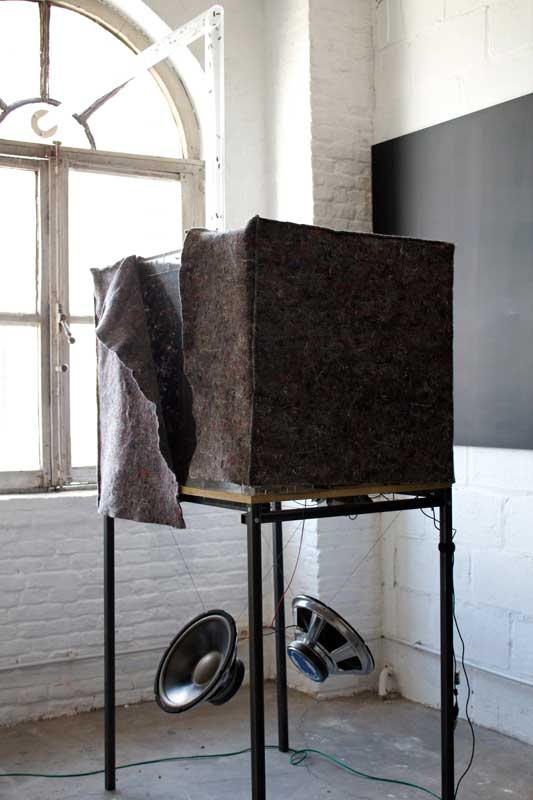
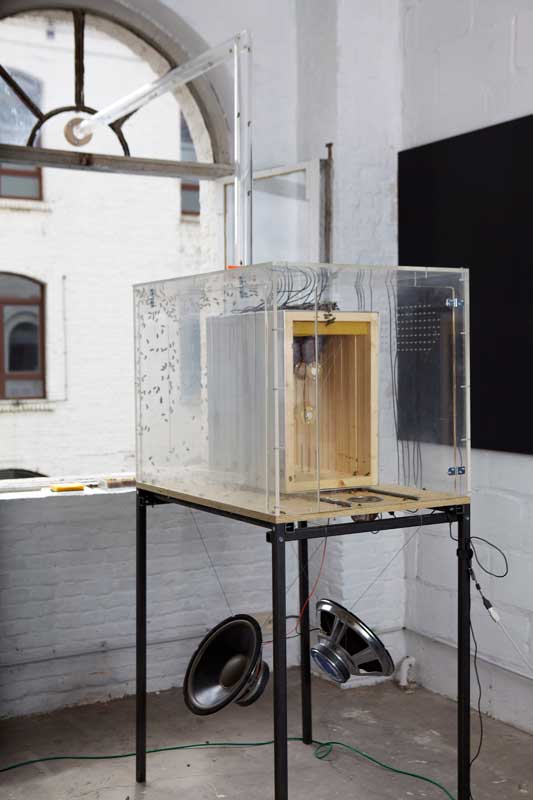
In the Transparent Beehive, the honey bees are the main performers. The bees create in real time a sonification of their actions, and as such they design a subbtle soundtrack that illustrates the life in the hive.
2. interaction with the surrounding ecosystem: the wall
the wall: : wall paper with black/white lines representing the environment
⇒ dit kan deel worden van de tentoonstelling indien er een grote muur is die behangen kan/mag worden met behangpapier waarop een map en informatie van de omgeving geprint is.
On the wall, from floor to ceiling, a map of Brussels Inner City, marked with the foraging areas of the bees. Botanical specifications and comments enrich the map.
3. the photo's
the photos's: SEM microscope pictures of the pollen and bee parts
the photos's will be presented on the wall, there are 18 photo's of 26×26 to be presented.
the photo's are mounted on aluminium

Stylized botanical drawings from flowers and SEM photography of pollen. Index cards give more information on the species.
4. the life in the hive: the videos
there are 2 x 3 video's, they will be presented in 2 series of 3 flat screens each.
⇒ I need from YOU 6 flatscreens and 6 DVD players + 1 set of speakers.
(Only 1 of the videos will play sound - but not loud)
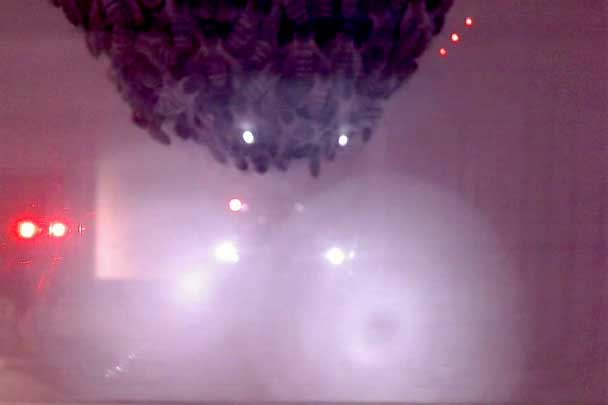

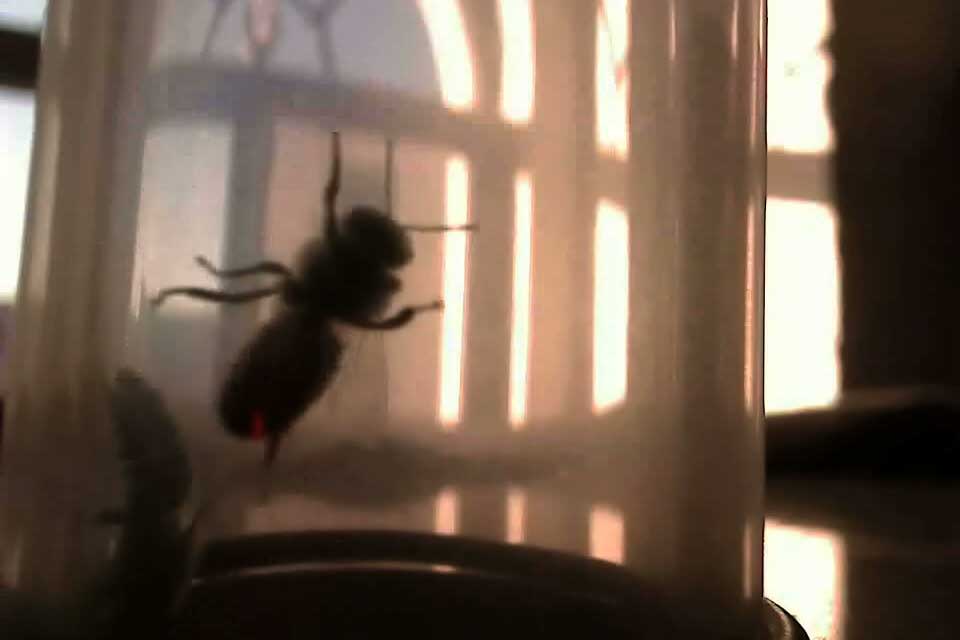
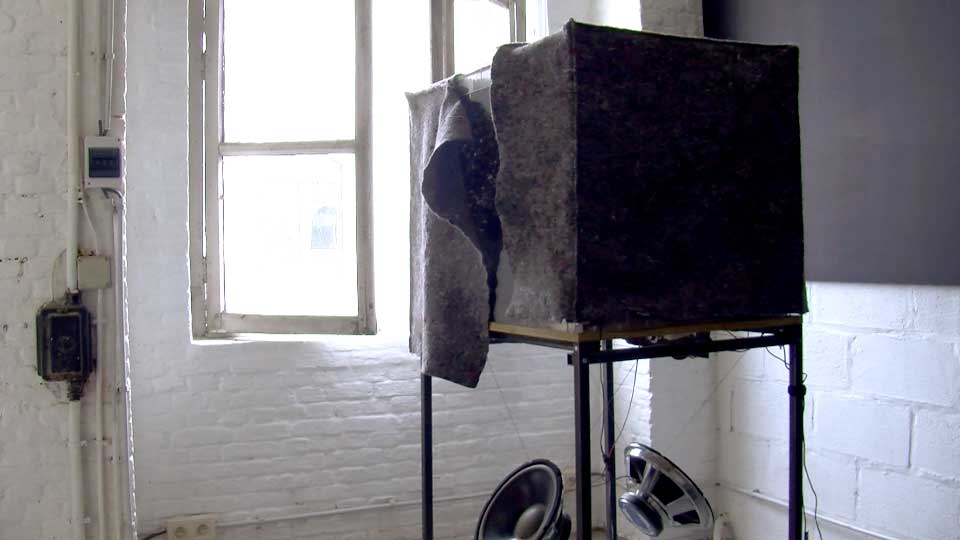
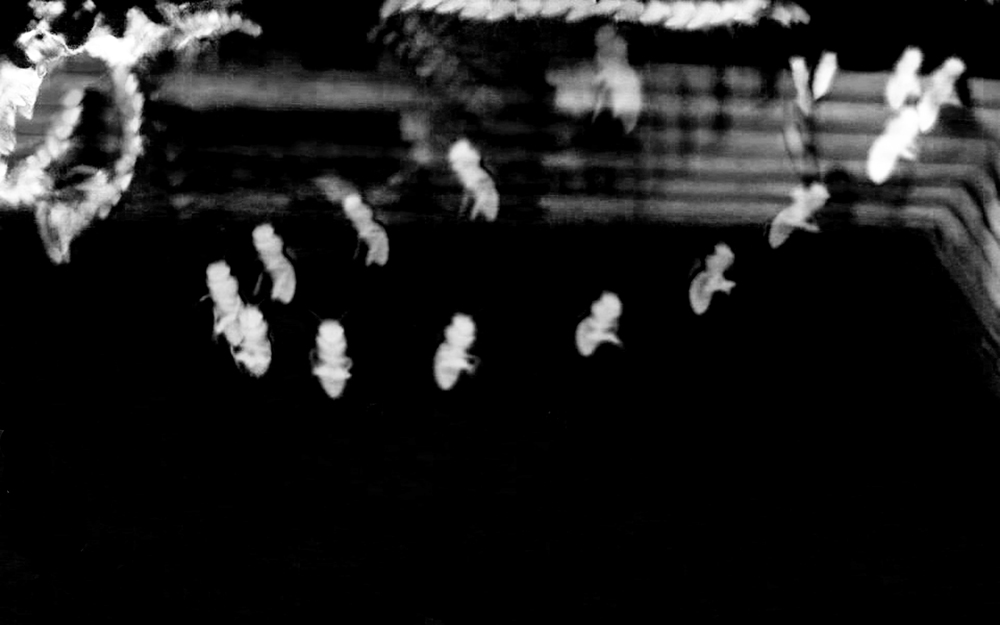
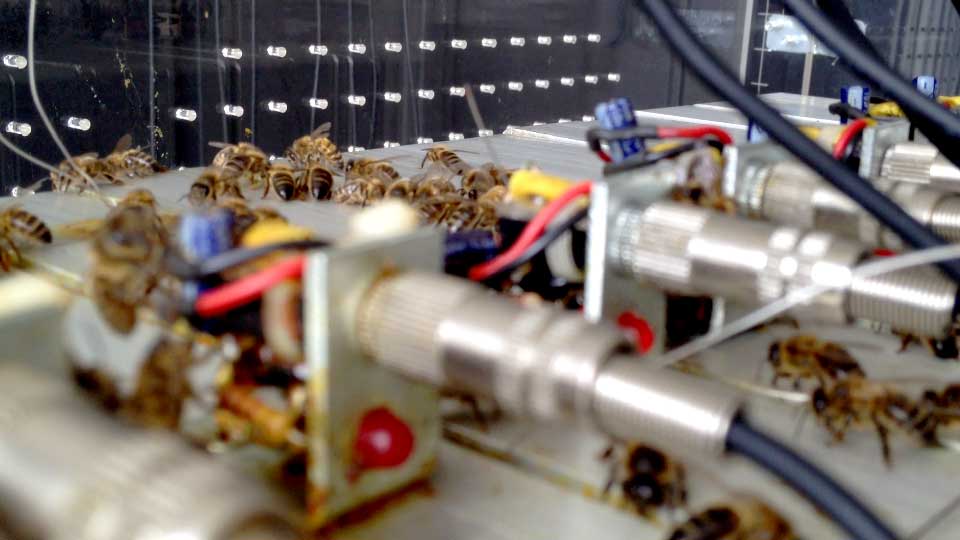
from left to right, from top to bottom:
1.http://pandora.okno.be/IA/editor/02:23:05,02:23:05
1.http://pandora.okno.be/HZ/editor/01:54:34,01:54:34
1.http://pandora.okno.be/HY/editor/00:37:42,00:37:42
2.http://pandora.okno.be/MK/editor/01:11:07,01:11:07
3.http://pandora.okno.be/MJ/editor/00:04:49,00:04:49
3.http://pandora.okno.be/HD/editor/00:00:05,00:01:57
4.http://pandora.okno.be/AH/editor/00:06:10,00:06:13
4.http://pandora.okno.be/HP/editor/00:12:45,00:12:51
5.http://pandora.okno.be/IC/editor/00:00:00,00:00:46
5.http://pandora.okno.be/HX/editor/00:02:22,00:05:34
5.http://pandora.okno.be/IB/editor/00:01:03,00:01:03
6.http://pandora.okno.be/IZ/editor/00:00:51,00:05:49
6.http://pandora.okno.be/IN/editor/00:01:05,00:01:35
7.http://pandora.okno.be/VM/editor/00:00:20.760,00:00:01,00:03:47
5. the Transparent Beehive Notebook
the Transparent Beehive book can be downloaded on this page, please click the image
The Transparent Beehive Cabinet gives an overview of the Transparent Beehive Project.
It describes in words and images the intense process of Bee Monitoring and the close collaboration with numerous colleague artists, scientists, engineers and beekeepers.
The relation bees and flowers is an evident one and is never far away in this notebook.
In an artistic way and starting from hands on experiences as a beekeeper, I give an account of the building of monitoring systems, their implementation in the beehives in the apiaries on the open field, the working with the collected open source data and most important: the disclosure to a public in a set of transdisciplinary art forms: photographs, films, sculptures and the Bee Archive.
A bee colony is a sophisticated instrument, the super organism demonstrates a feat of collaboration through communication.
Working with honeybees is absolutely fascinating and the job they do for the sake of mankind is certainly underevaluated.
It is a shame that they go through such difficult times. I will continue to support them where I can.
A digital version of the book will be available for the public during the exhibition, presented on a computerscreen.
This notebook gives background info by the bee monitoring project. Scientific experiments, artistic drawings, articles,texts, artistic impressions , … etc.

6. archives of a bee-monitoring season: the show-cases
the bee-archive in the show-cases
The show cases will be filled with all labelled items from the archive (see pictures below).
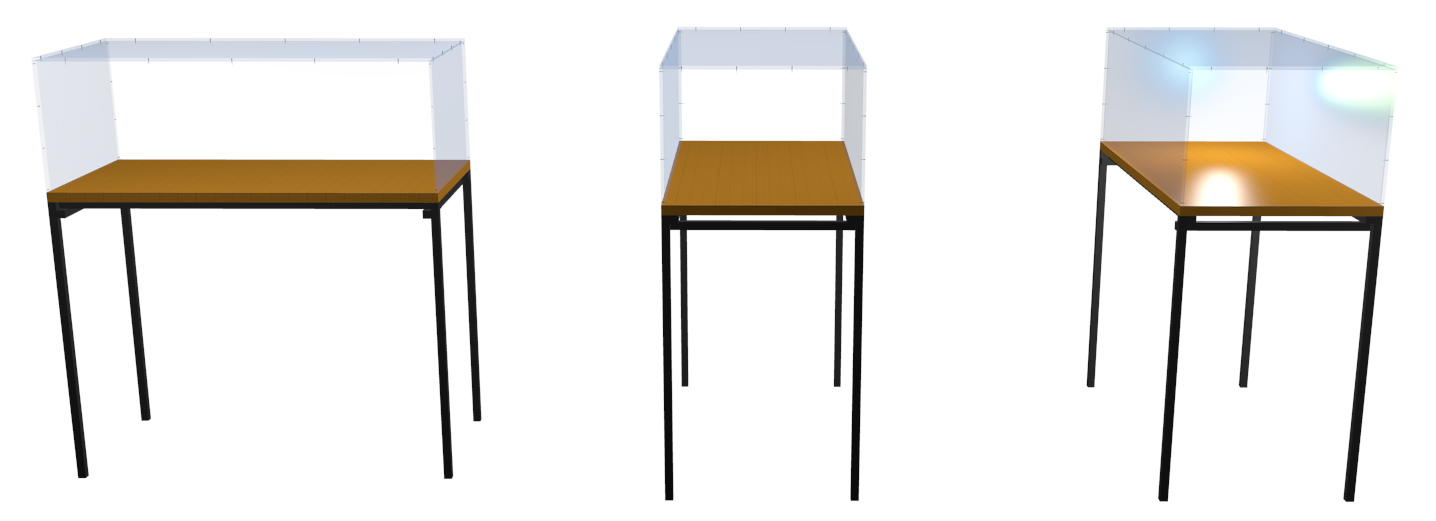
3D design of OpenStructures show cases for bee monitoring archives

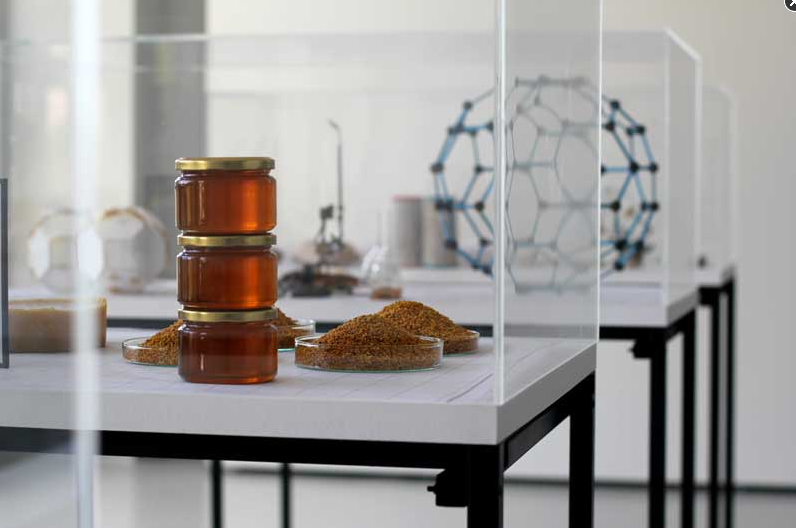
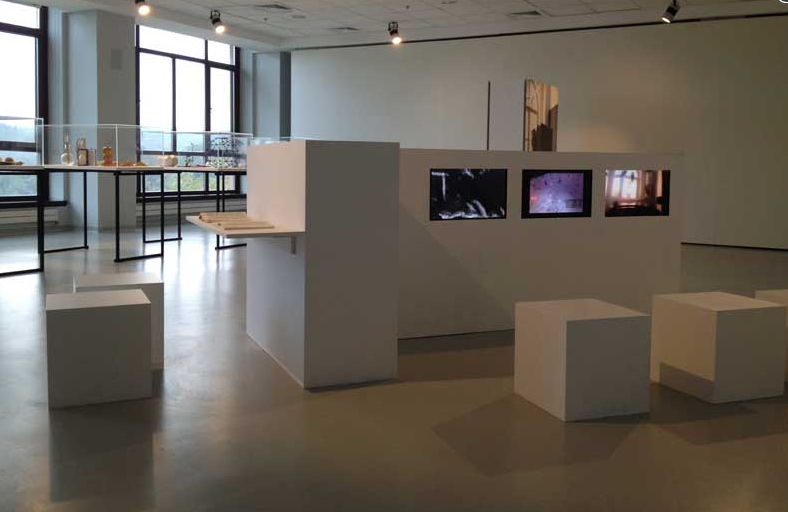
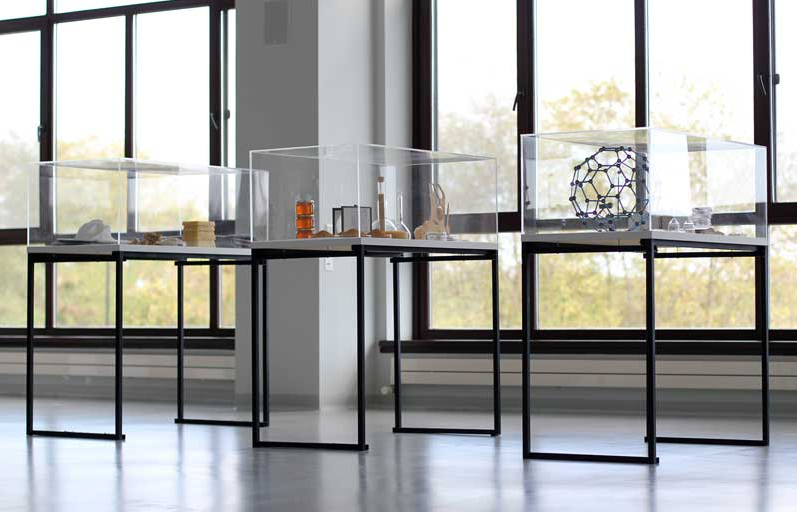
For pictures of the installation as it was presented at Koç University in Istanbul, please go to:
http://annemariemaes.net/presentations/bee-laboratory-presentations-2/scientific-inquiries-exhibition-istanbul/

